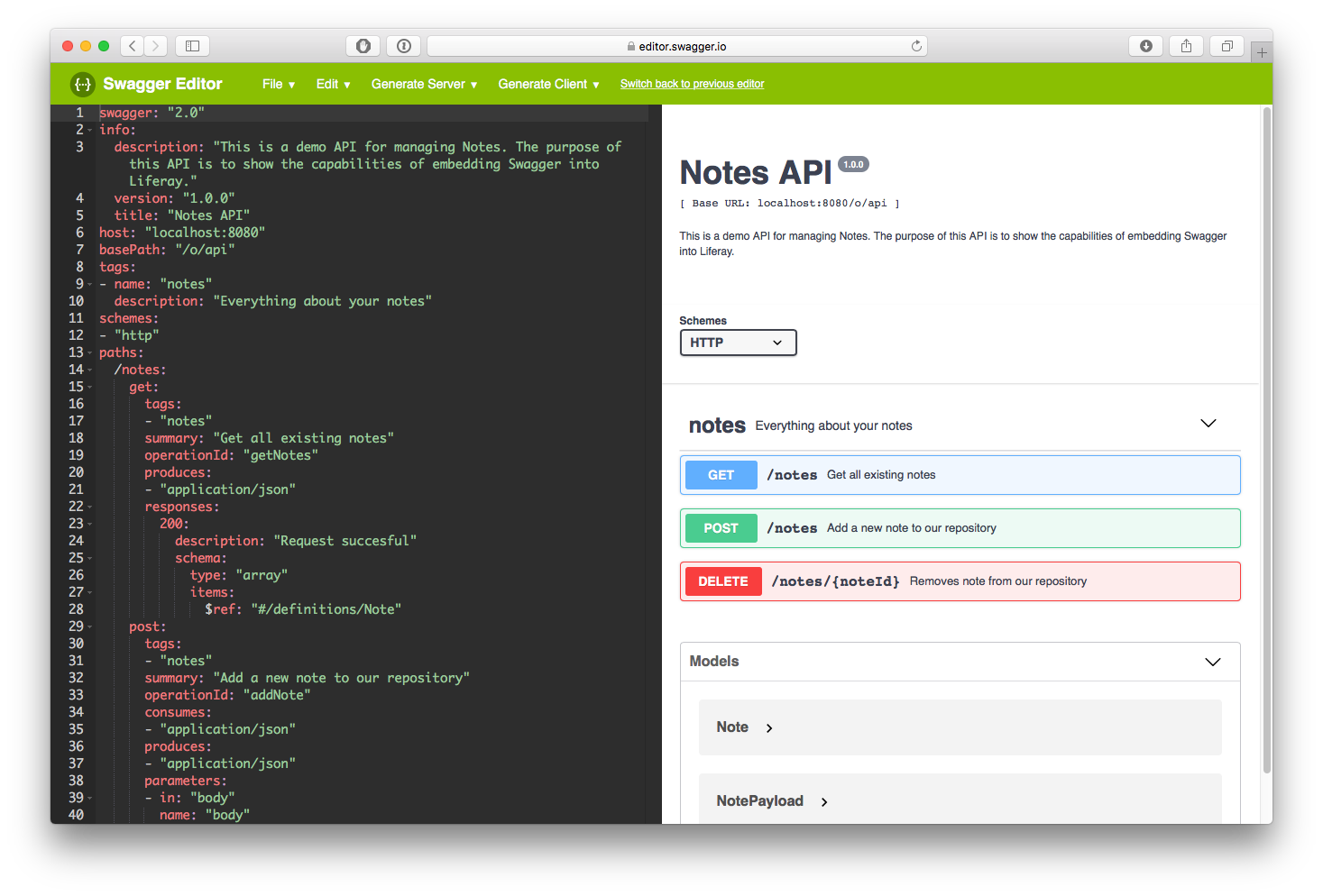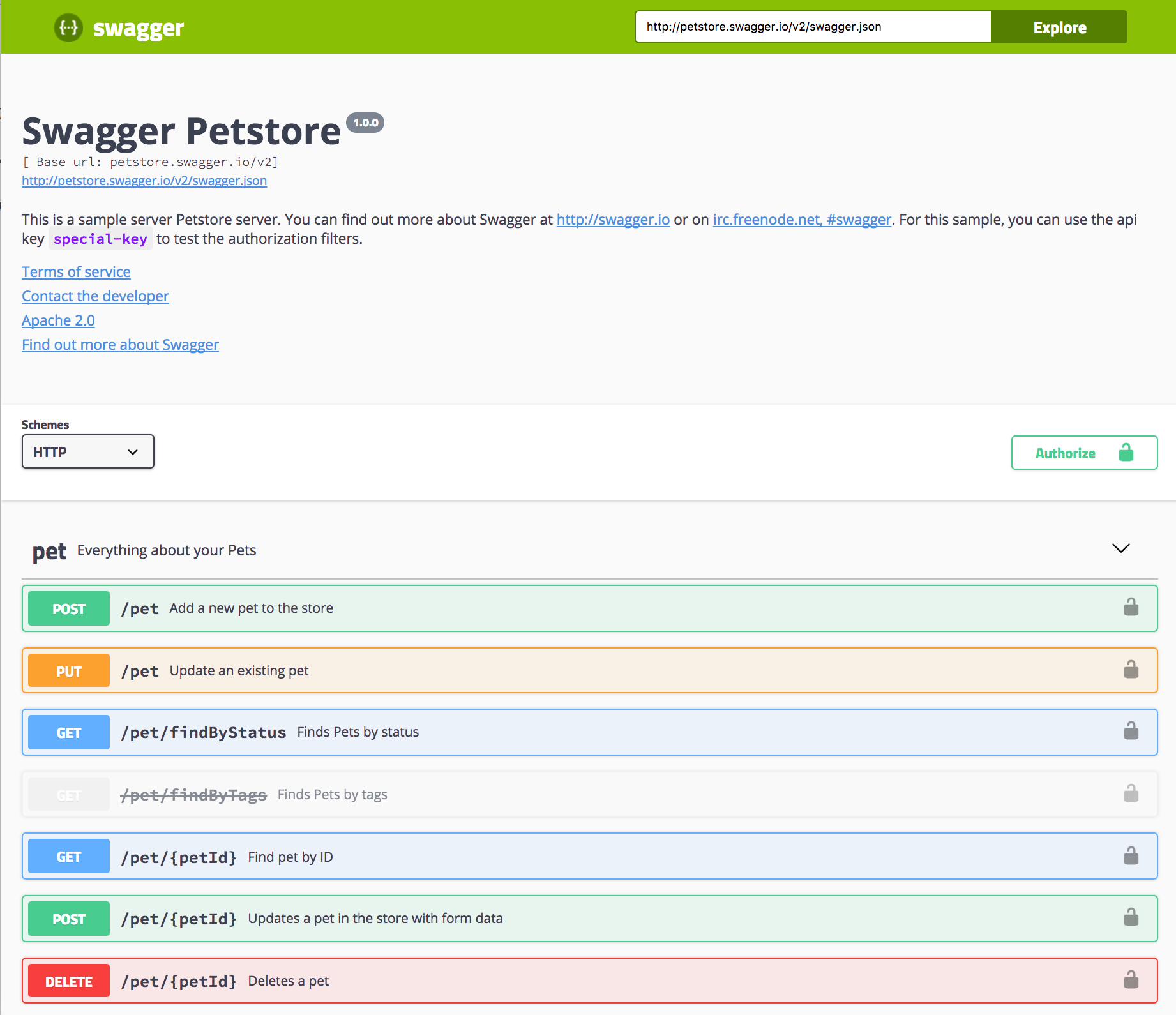

- OPENAPI SWAGGER EDITOR HOW TO
- OPENAPI SWAGGER EDITOR INSTALL
- OPENAPI SWAGGER EDITOR CODE
- OPENAPI SWAGGER EDITOR LICENSE
- OPENAPI SWAGGER EDITOR DOWNLOAD
w, -write enable writing back to the source definition p, -port specify the port to run on, defaults to $PORT or 3000 l, -launch start a web-browser pointing to the GUI d, -definition serve the given OAS definition not if you are running your own web-server), otherwise they are only there for PaaS deployments.
OPENAPI SWAGGER EDITOR INSTALL
You only need to npm install the Node.js modules if you wish to use the openapi-gui embedded web server (i.e. To get the app up and running just browse to the live version on GitHub pages, deploy a clone to GitHub pages, deploy to Heroku using the button below, or clone the repo and point a browser at index.html or host it yourself - couldn't be simpler. OpenAPI-GUI runs entirely client-side using a number of Javascript frameworks including Vue.JS, jQuery and Bulma for CSS. At all other times you must remember to select Save manually. Make sure you save your JSON/YAML output locally.īefore performing a destructive action, OpenAPI-GUI saves the current state of the definition. OpenAPI-GUI only stores one definition at a time, and this is in your browser's local-storage.
OPENAPI SWAGGER EDITOR DOWNLOAD
When finished, download the output to save it locally or copy it your clipboard. View the JSON/YAML output at any time by selecting one of the "Export" tabs. When using Docker, you can set the value of the url query parameter to %2fserve to pick up the definition you passed in on the Docker commandline.Ĭlick an item from the menu on the left to begin editing. You can load an existing definition by appending a ?url= query parameter to the initial start page with the value being the URL to the definition you wish to load. When an existing definition is used, it is parsed and forms for editing each Path, Operation and Parameter will be created. Select an existing OpenAPI 2.0 or 3.0.x definition to upload, or create a new definition and start adding Paths, Operations, and Parameters. The complete history of the project is maintained on GitHub. This project was initially a fork of Daryl Kuhn's IODoctor, which in turn was inspired by IODoctor by Brandon West which was written in Ruby. That version is currently unmaintained apart from security fixes. Imported OpenAPI 2.0 definitions are automatically converted to v3.0.įor the previous Swagger / OpenAPI 2.0-only version see here. In its current form it is most useful as a tool for starting off and editing simple OpenAPI definitions. The Following is the final YAML all put together openapi: "3.0.OpenAPI-GUI is a GUI for creating and editing OpenAPI version 3.0.x JSON/YAML definitions. $ref: "#/components/schemas/Pet" Conclusion This makes use of a "reference" using the "$ref" syntax Pets: You can also place components inside other components, as the Pets component is an array, where the objects are the Pet component. A quick gotcha is that you do not set if a property is required on the property itself, but rather under the "required" section in the component. Components components:Ĭomponents are used to represent request bodies, responses, and other locations where you can have an "object".Įach Component has properties of different types, such as integers or strings. The "responses" is used to outline what can be expected from the API, and what the different responses look like and mean. The "tags" determine how your endpoints are grouped in the UI, and parameters are passed into the endpoints as either part of the "query" as seen above, or can be passed in the url such as /pets/ The "paths" section is where you document your endpoints. This contains the links to your server, so that when you click "Try it Out", the Swagger UI can make a request to that server Paths paths:ĭescription: How many items to return at one time (max 100)ĭescription: A link to the next page of responses
OPENAPI SWAGGER EDITOR LICENSE
This contains the basic information about your API, but make sure to edit the license to be clear about how your API can be used.

OPENAPI SWAGGER EDITOR CODE
We will be using a fictional Pet Store where we can list all pets, get a specific pet, and create a new pet.īegin by going to the Swagger Editor online ĭelete all the existing YAML in the editor, and add the code snippets below as you follow along ( You will see some errors at first, these will go away as you fill in more of the code ) Overview
OPENAPI SWAGGER EDITOR HOW TO
This guide will break down the main parts of the OpenAPI specification, and follow up guides will show how to deploy Swagger UI on various backends. It is especially useful for easily communicating your API to front end teams, or opening the api to external developers.

OpenAPI, is an API documentation standard that also comes with a great set of tools and UI called Swagger.


 0 kommentar(er)
0 kommentar(er)
